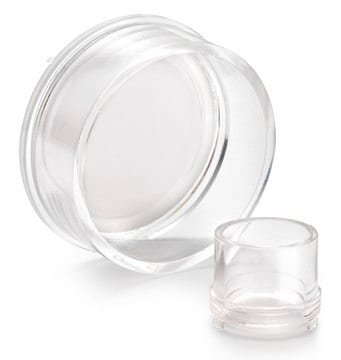CLS3422
Corning® Transwell® 24 well plates
8.0 μm pore size, Tissue Culture (TC)-treated surface round wells, clear bottom, clear wells, flat bottom wells, clear polystyrene (plate or dish), polycarbonate membrane, sterile, case of 48, pack of 12
Synonym(s):
cell culture inserts, corning plates, tissue culture plate, tissue culture plates
About This Item
Recommended Products
product name
Corning® Transwell® polycarbonate membrane cell culture inserts, 6.5 mm Transwell with 8.0 μm pore polycarbonate membrane insert, TC-treated, w/lid, sterile, 48/cs
material
clear bottom
clear polystyrene (plate or dish)
clear wells
flat bottom wells
polycarbonate membrane
round wells
sterility
sterile
feature
lid
skirt
packaging
pack of 12
case of 48
manufacturer/tradename
Corning 3422
technique(s)
cell culture | mammalian: suitable
insert working volume
0.1 mL
membrane diam.
6.5 mm
size
24 wells
surface area
0.33 cm2 , cell growth area
well working volume
0.6 mL
color
translucent
pore size
8.0 μm
binding type
Tissue Culture (TC)-treated surface
Looking for similar products? Visit Product Comparison Guide
Related Categories
General description
- 10 μm thick translucent polycarbonate membrane
- Treated for optimal cell attachment
- Packaged 12 inserts in a 24 well plate, 4 plates per case
- Membrane must be stained for cell visibility
- Sterilized by gamma radiation
Application
Legal Information
recommended
Certificates of Analysis (COA)
Search for Certificates of Analysis (COA) by entering the products Lot/Batch Number. Lot and Batch Numbers can be found on a product’s label following the words ‘Lot’ or ‘Batch’.
Already Own This Product?
Find documentation for the products that you have recently purchased in the Document Library.
Customers Also Viewed
Our team of scientists has experience in all areas of research including Life Science, Material Science, Chemical Synthesis, Chromatography, Analytical and many others.
Contact Technical Service






